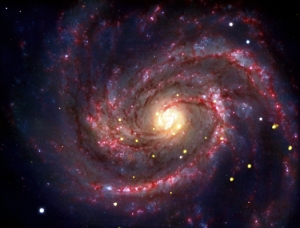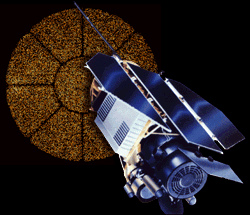Characteristics of 30-year old supernova remnant SN 1979C are consistent with predicted theory on birth of black hole or possibly a rapidly spinning neutron star

Image: NASA/Chandra
Space news (December 11, 2015) – 50 million light-years from Earth, in galaxy M100 –
One of the most enigmatic cosmic objects discovered during the human journey to the beginning of space and time, black holes continue to entrance and mystify both astronomers studying them and common people trying to imagine the possibility of such monsters existing. Black holes are also one of the most difficult celestial objects to detect since not even light rays can escape from the strength of their gravitational-embrace, once they travel beyond the imaginary point-of-no-return astronomers call the “event horizon” of a black hole.
Astronomers working with NASA’s Chandra X-ray Observatory, after analysis of additional data provided by NASA’s Swift Gamma-ray Burst Explorer, the European Space Agency’s XMM-Newton spacecraft, and German’s ROSAT Observatory, believe they have evidence to suggest 30-year old supernova remnant SN 1979C could be a black hole.

Supernova remnant SN 1979C shined X-rays steadily during constant observation from 1995 to 2007. This suggests to astronomers either a black hole eating material left over from the supernova or a hidden binary companion feeding hot material to the monster hidden within.
“If our interpretation is correct, this is the nearest example where the birth of a black hole has been observed,” said Daniel Patnaude of the Harvard-Smithsonian Center for Astrophysics in Cambridge, Mass. who led the study.
Astronomers have detected new black holes that existed during the ancient past through gamma-ray bursts (GRBs) associated with them. SN 1979C is listed in a class of supernovae not expected to produce GRBs, which theory predicts could be the most common way to make a black hole.
“This may be the first time the common way of making a black hole has been observed,” said co-author Abraham Loeb, also of the Harvard-Smithsonian Center for Astrophysics. “However, it is very difficult to detect this type of black hole birth because decades of X-ray observations are needed to make the case.“
The idea SN 1979C is a young, recently-formed black hole made from the remnants of a star with 20 times the mass of Sol, that went supernova some thirty Earth-years ago, is consistent with present theory. In 2005, a theory was put forth claiming the bright source of X-rays detected steaming from the supernova remnant is powered by a jet emanating from the monster that’s unable to penetrate the thick hydrogen envelope surrounding it.
Astronomers think there could be one other possibility for the identity of SN 1979C. It could be a rapidly spinning neutron star, with an extremely powerful wind of high energy particles. Present theory predicts this would produce the bright X-ray emissions detected during 12 years of constant observation.
If this is true, this would make this supernova remnant the youngest known example of a celestial object called a pulsar wind nebula. The Crab Nebula is the best-known example of a bright pulsar wind nebula, but we would have to go back over 900 years to view it as a 30-year old. SN 1979C is a lot younger, which is a great opportunity to study one of the most enigmatic, yet difficult to detect celestial objects viewed during the human journey to the beginning of space and time.
“It’s very rewarding to see how the commitment of some of the most advanced telescopes in space, like Chandra, can help complete the story,” said Jon Morse, head of the Astrophysics Division at NASA’s Science Mission Directorate.

Study continues
Astronomers will now continue to study SN 1979C, to see if they can determine its identity. No matter it’s true identity or nature, we can expect this celestial object to be one of the most studied examples of a young supernova remnant during recent times.
You can learn more about black holes here.
Discover the journey of NASA’s Chandra X-ray Observatory here.
Learn more about NASA’s Marshall Space Flight Center here.
Learn about the mission of the Harvard-Smithsonian Center for Astrophysics here.
Take NASA’s journey through space history here.
Learn about NASA’s Swift Gamma-ray Burst Explorer here.
Take the journey of the European Space Agency’s XMM-Newton spacecraft here.
Discover German’s ROSAT Observatory here.
Learn about hydrocarbon dunes detected by NASA’s Cassini spacecraft on Saturn’s frozen moon Titan.
Read about the Monster of the Milky Way as it comes to life.
Learn how astronomers study a galactic nursery using the Hubble Space Telescope.

